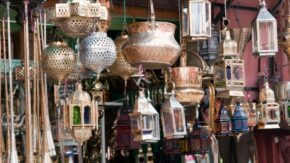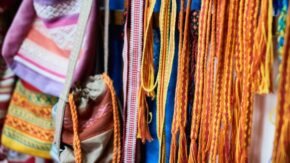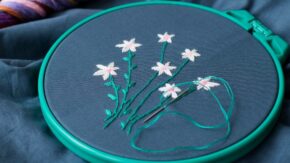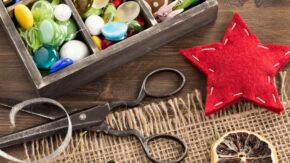Flower crafts use natural or synthetic plants and flowers to create beautiful, balanced displays and compositions that can be used for celebrations or as home decorations.
The main types of flower crafts include bouquets, floral designs, and Ikebana, the Japanese art of flower arrangement. Flower crafts have many benefits, including improving your concentration and focus, stress reduction, developing your organizational skills, and forward planning, all of which can improve other areas of your home and work life.
Of course, all these crafts need a few specialist tools, such as scissors, florist’s wire, foam, vases, and ribbon. We show you how to use those tools to create gorgeous floral crafts with our top flower craft tips!
If you have a special occasion coming up or simply want to learn how to transform your home with beautiful flower arrangements, you must read this guide!
What Is Flower Craft?
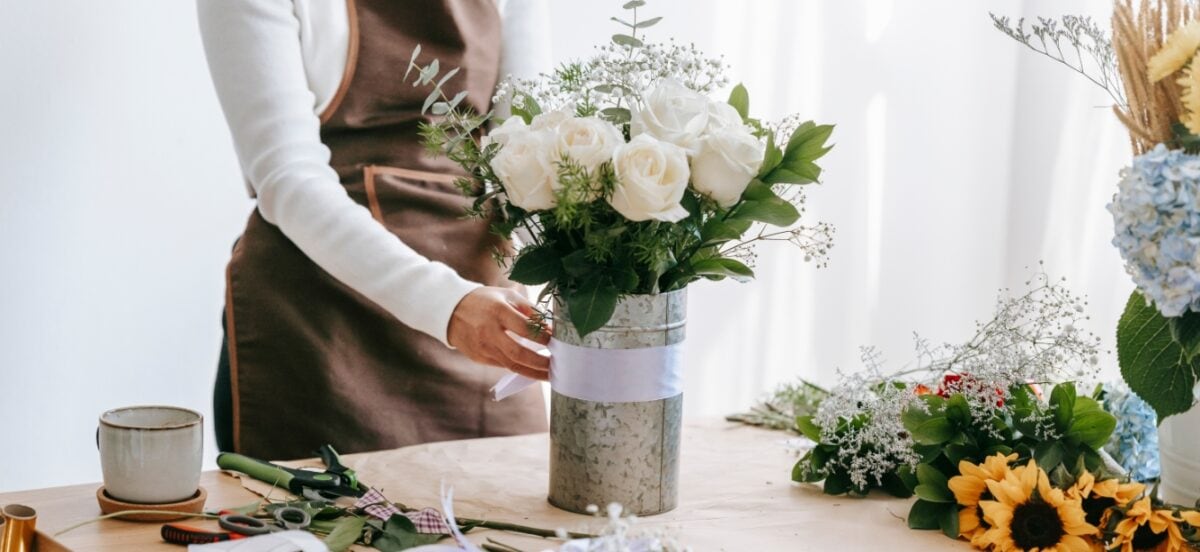
Flower crafts are generally defined as using natural or synthetic flowers and plants to create balanced floral displays and bouquets. You can use flower crafts to make formal bouquets for weddings, to create funeral arrangements, and to make beautiful displays as home decorations.
What Are The Different Types Of Flower Crafts?
The different types of flower crafts are widely described as bouquets, floral designs, and Ikebana. You can use natural or synthetic blooms and foliage in floral crafting, depending on the season and what specific species you want.
Keep reading to learn more about each form of this absorbing hobby.
Bouquet
Flower bouquets are collections of flowers brought together in a creative arrangement. You can use flower bouquets to complement your home decoration and in public buildings, although they are most commonly seen carried by the bride at weddings.
There are several popular Styles and shapes of hand-held bouquets, including crescent, cascading, and nosegay.
Floral Design
Floral and plant design is the art of making gorgeous arrangements from flowers, leaves, ornaments, and the like. Learning how to keep your designs in balance and proportion and choosing the right mix of flowers and greenery are essential skills you need to master if you take up this fascinating, rewarding crafting hobby.
Ikebana
Ikebana is the Japanese art of flower arranging and design and is also called kadō. This traditional form of flower craft goes right back to the Heian period when natural floral offerings were made as religious tributes in temples. Later, Ikebana arrangements were used to decorate the tokonoma of traditional Japanese homes.
This form of flower arranging uses branches, blossoms, stems, and leaves to bring out their inner qualities and express emotion.
Are There Any Benefits To Learning Flower Crafts?
Yes, there are plenty of benefits to be enjoyed from learning flower crafts! This hobby can really improve your life in many ways, so keep reading to find out how!
Develop Your Fine-Motor Skills
Flower crafts can help to develop your fine motor skills since this craft can involve intricate, detailed work demanding good hand-eye coordination. Working with small, fragile blooms helps to strengthen the tiny muscles in your hands and fingers, which is essential for writing and other similar precise tasks.
Learn To Follow Instructions
Some flower crafts have detailed instructions that you must follow accurately to get the desired results. That helps improve your ability to understand and follow guidelines and processes, which is a valuable skill to have in both professional and academic settings.
Improve Your Visual Skills
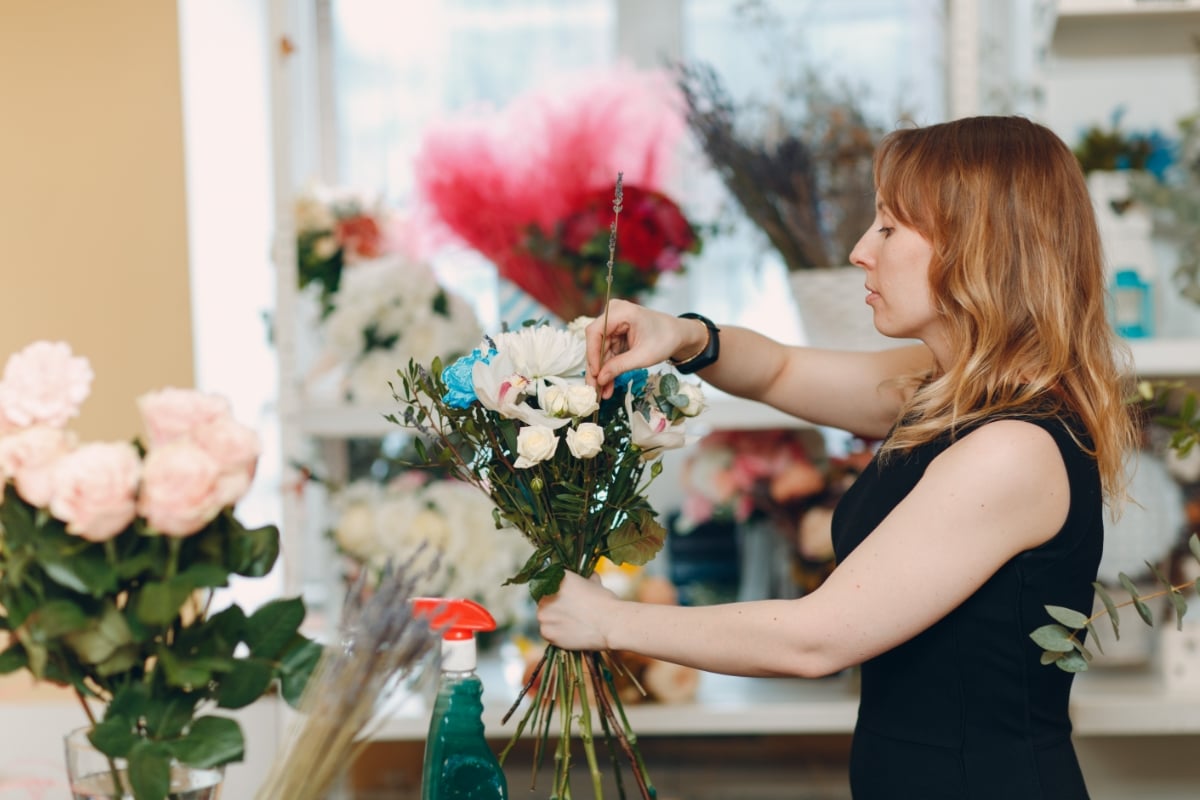
You will need to develop good visual skills to judge shapes, sizes, colors, and spatial relationships when you create arrangements and bouquets from flowers since getting the proportion and balance right in your displays is crucial.
Get Creative!
Like any craft form, flower crafts encourage your creativity and imagination since you’ll be designing and creating unique artistic pieces.
Express Yourself Through Flowers
Flower craft encourages self-expression and can provide a form of emotional release that’s essential in managing anxiety, stress, and other negative emotions.
Improves Your Confidence
Not everyone has a creative streak, so when you produce beautiful flower arrangements that visitors to your home admire, that’s a massive boost to your confidence and self-esteem!
Helps Develop Patience
If you’re impatient, you’ll have to put that on the backburner if you take up flower crafts! Many flower crafts are very time-consuming, and it takes considerable effort to complete some projects, so you’ll need to develop patience.
Encourages Concentration
Flower crafts demand concentration and focus, especially if you take on difficult projects for special occasions. So, if you tend to be a butterfly and struggle to focus on work tasks, getting into this hobby can really help you improve that aspect of your life.
Develops Planning Skills
Before you start any flower crafting project, you must plan what blooms you will use, gather what materials you need, set up a suitable workspace, and work out how long the project will take to complete.
That’s great for developing good planning and foresight, which will also benefit you at work and in your home life!
Improves Your Organizational Skills
Organizing materials, tools, and workflow is a crucial part of flower crafting. So, if your organizational skills are weak, getting into flower crafting can really help improve them.
What Are The Tools Needed For Flower Craft?
The tools needed for all kinds of flower crafts are pretty interchangeable, so once you’ve assembled a basic toolkit, you can switch between different types of projects relatively easily.
Here’s a basic overview of the different tools you’ll need for flower crafts, together with helpful links to suitable products you can buy online to get you started.
Bouquet
As mentioned earlier, a bouquet is basically a collection of flowers, foliage, and other decorative elements that are assembled in an arrangement you can carry or use as decorations in vases.
Flowers
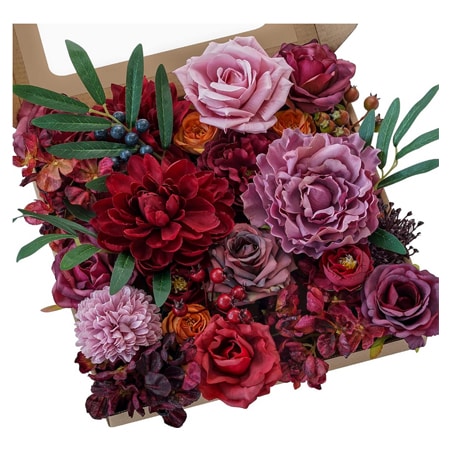
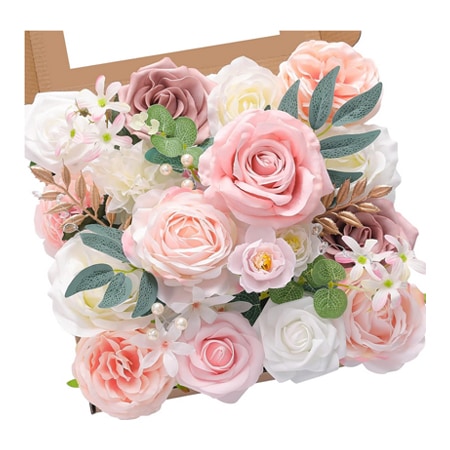
Whatever field of flower craft you decide to get into, you’ll need flowers to make it work! You can use fresh or silk flowers if you want blooms that are not in season or are a particular color.
Foliage
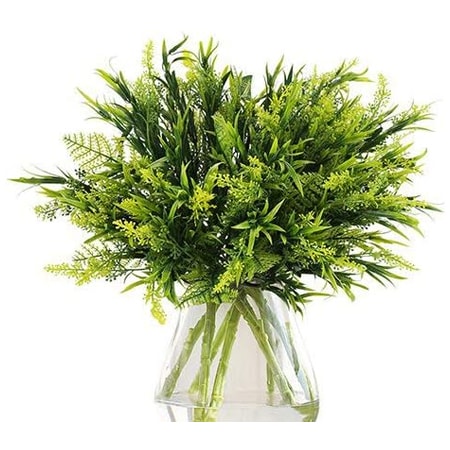
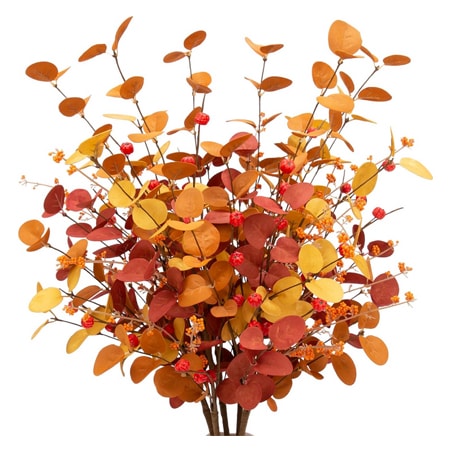
Flowers look best when displayed against a backdrop of natural foliage that adds depth, proportion, and balance to the arrangement. Again, you can use silk foliage or natural leaves from your garden.
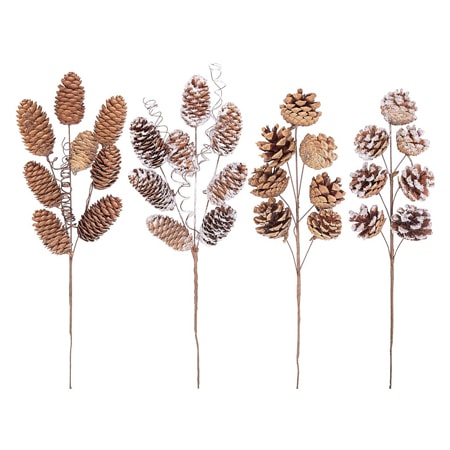
Depending on the season, you might also want to include natural items in your display like larch cones, fake berries, and the like.
Floral Wire
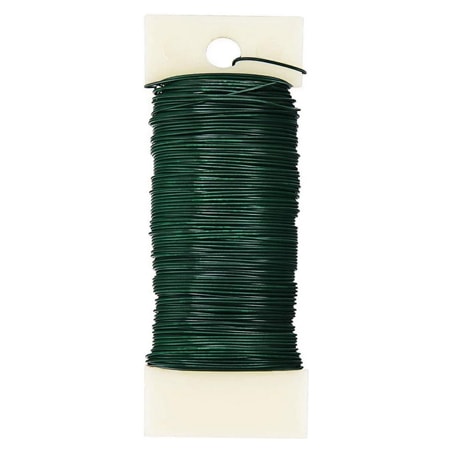
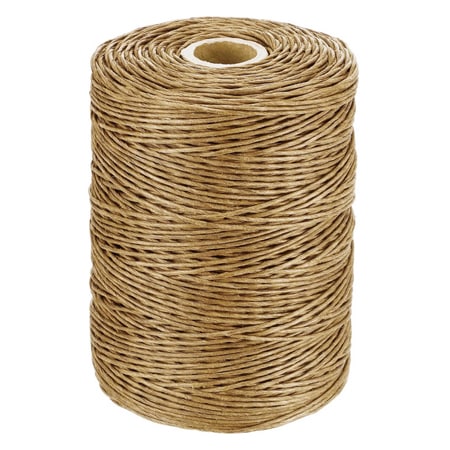
Floral wire is used to hold garlands and arrangements together and generally comes in shades of green, although you can get bronze and white, too.
Floral Tape
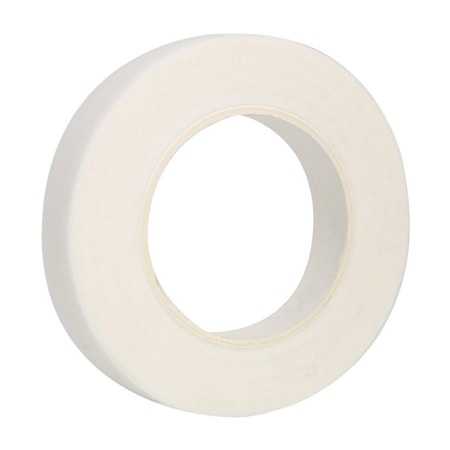
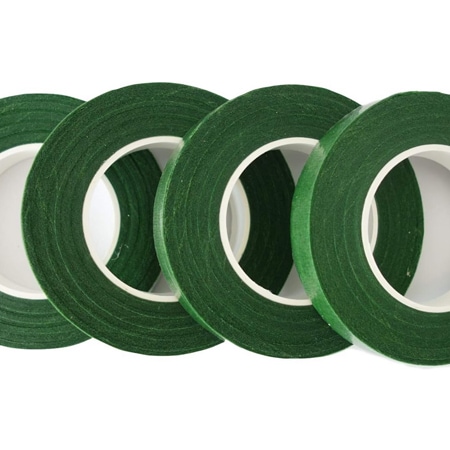
Floral tape is used for wrapping the stems of a bouquet to form the handle and is commonly used when creating wedding bouquets and the like.
Ribbon Or Fabric
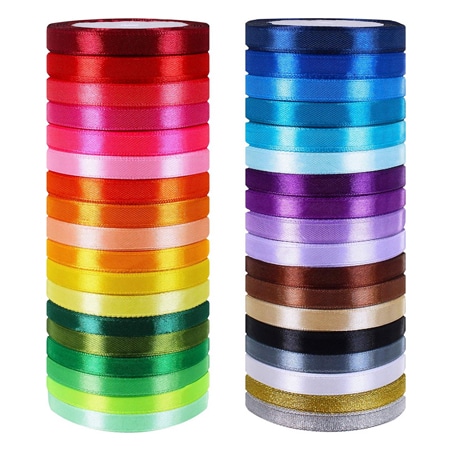
Ribbon or fabric makes a fabulous finishing touch to any bouquet or arrangement, so it’s handy to have some in your collection of materials. You can choose from satin ribbons that give an eye-catching glossy finish to your work or glitzy, sparkly ribbons that will jazz up your birthday bouquet.
Scissors Or Pruners
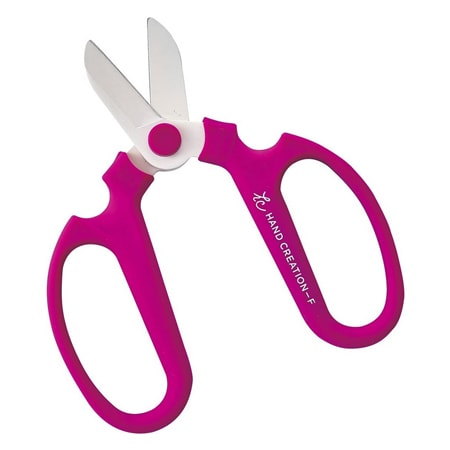
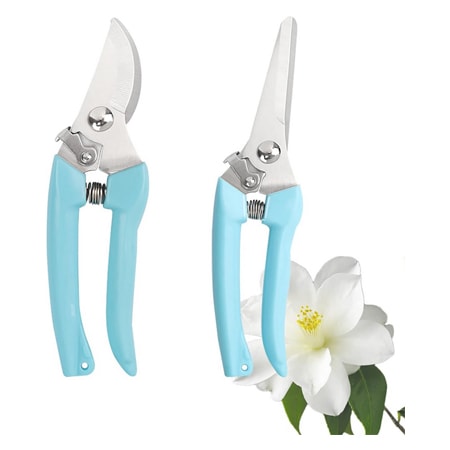
A sharp, high-quality pair of scissors or pruners is essential in flower crafts. Blunt scissors produce torn, ragged edges to the flower stems, preventing them from taking up water, meaning your arrangement won’t last long.
Vase Or Container
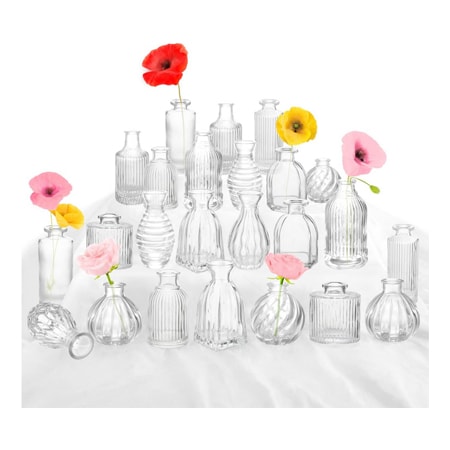
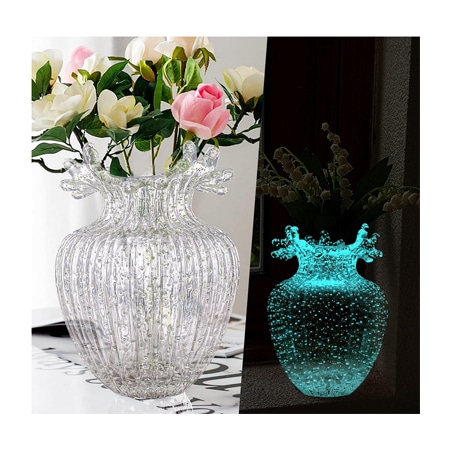
If you’re planning on creating an arrangement for display in your home, in church, or in your workplace, you’ll need a suitable container or vase. Obviously, there are unlimited choices here, so just pick something that complements your choice of blooms rather than distracting from them.
Water Tubes Or Floral Foam
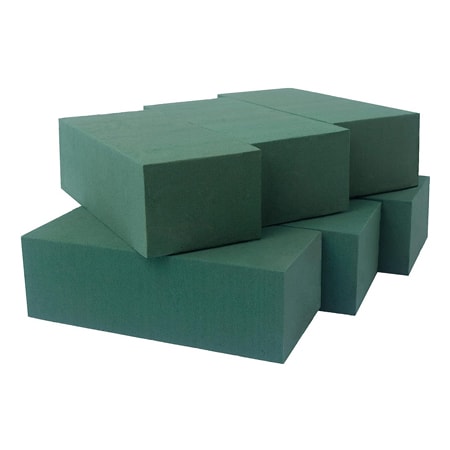
Floral foam (Oasis) or water tubes are crucial for keeping your arrangements fresh and well-hydrated and providing a firm base for the stems.
The beauty of floral foam is that you can reuse it and shape it to the precise form you need.
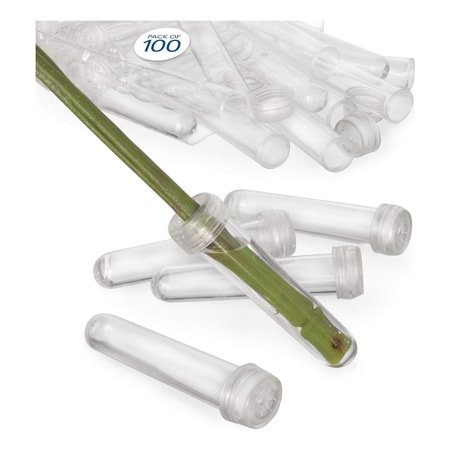
Water tubes are small pipette-type vessels that can be incorporated into flower arrangements to keep a feature bloom fresh.
Floral Design
Floral design uses much the same tools and materials as you need to craft bouquets. That’s good news since it means you can enjoy both crafts without having to buy lots of different materials and tools.
Flowers
You can choose from fresh or silk flowers to create designs that are individual, unique, and seasonal. The scope for floral design is virtually limitless, so let your creativity run wild!
Foliage And Greenery
Flowers can look spectacular when displayed against a backdrop of natural greenery and foliage that adds depth, proportion, and balance to your arrangement. Use fake foliage or natural greenery from your garden and the surrounding countryside to give your design individuality and flair.
Floral Foam
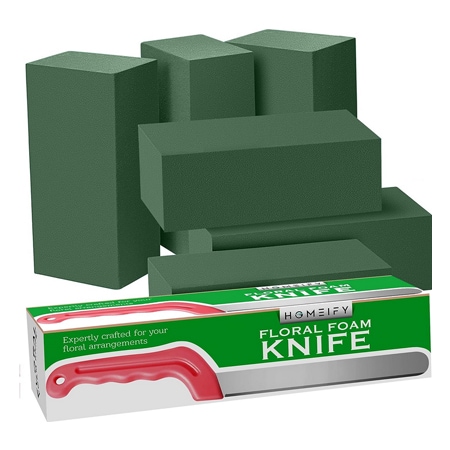
Floral foam is also sometimes called Oasis and is handy for stabilizing your arrangements and providing the flowers with moisture. You can reuse this medium and cut it to the shape and size you need.
Vase Or Container
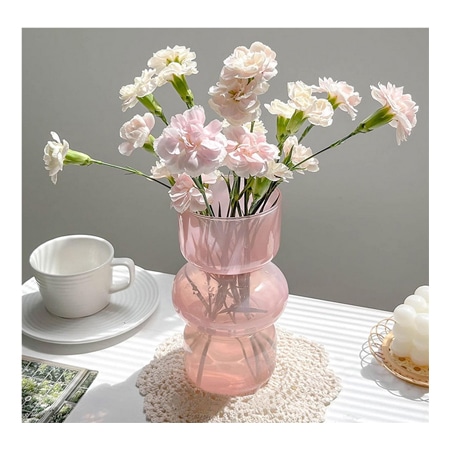
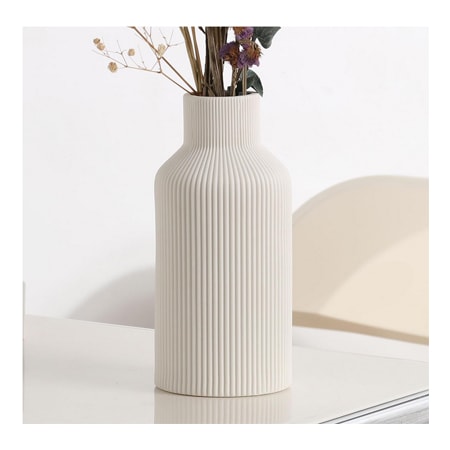
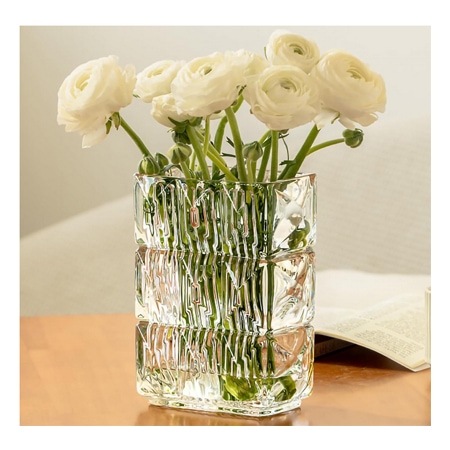
Vases or containers are essential to hold most flower arrangements and displays. A quick Google brings up a massive choice of containers you can use, or you might find a retro piece at your local thrift or charity shop.
Floral Accessories
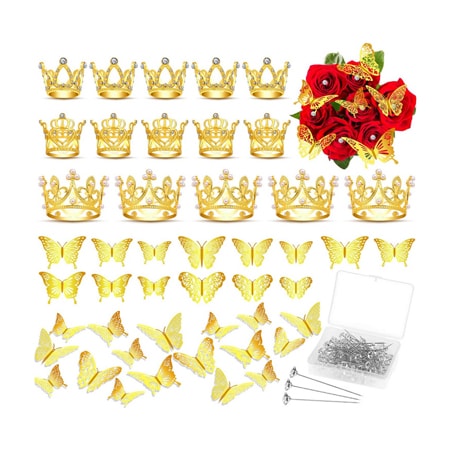
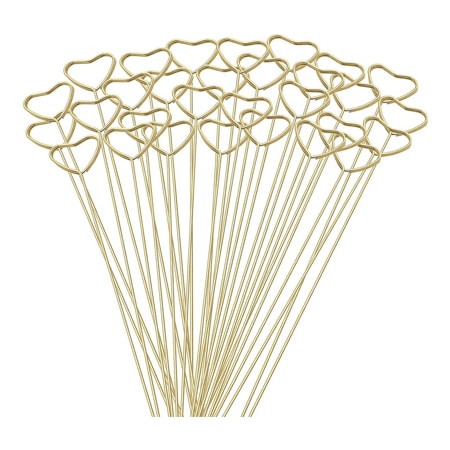
Floral accessories for arrangements and displays can take many forms, including butterflies, crowns, hearts, and numerous small beads, crystals, etc. Simply choose something that adds to the display rather than distracting from the flowers; that should always be the stars of the show.
Floral Tape And Wire
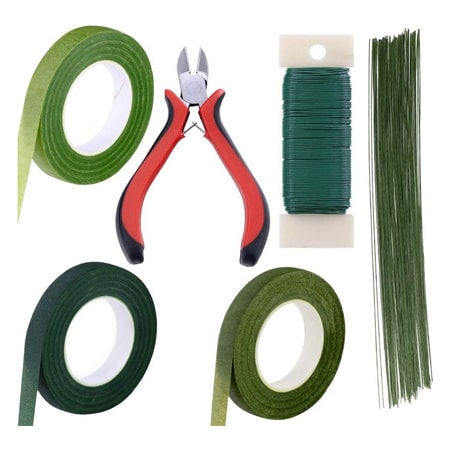
Floral tape and wire are used to secure blooms and stems in place in your finished arrangement. If you don’t anchor your display, the stems will shift as the blooms come out and ruin the balance and proportions of the arrangement.
Floral Scissors Or Pruners
You’ll need a high-quality set of pruners or scissors to trim your flower and greenery stems, branches, and other natural elements. Always choose the best quality scissors you can afford and keep them sharp, as blunt blades will damage the stems, making it difficult to keep the blooms fresh.
Design Tools
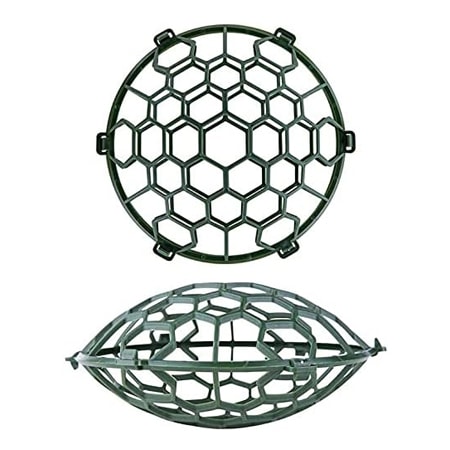
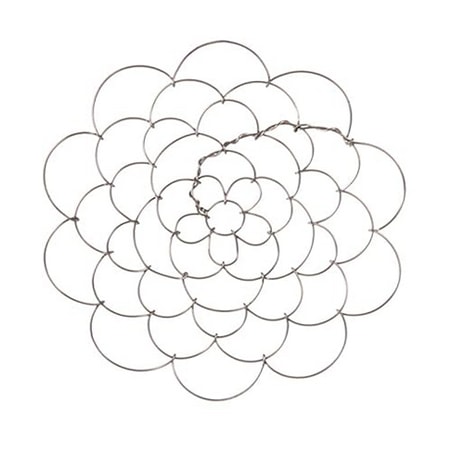
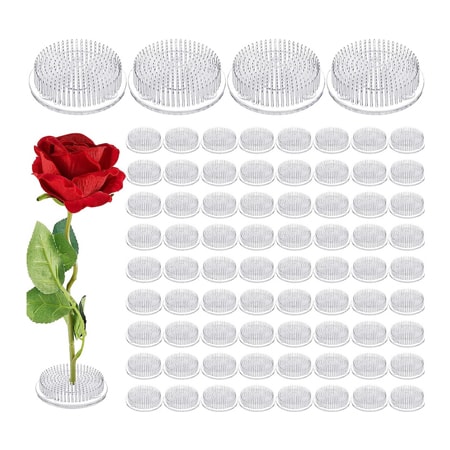
Various design tools will help you create stunning floral displays, such as floral cages for centerpiece designs, flower frogs, and pin holders.
Ikebana
Ikebana is the traditional Japanese art of flower arranging, where the spirit of the flowers are brought to the fore. This style of flower design is popular worldwide, not just in Japan!
Kenzan (Floral Pin Frog)
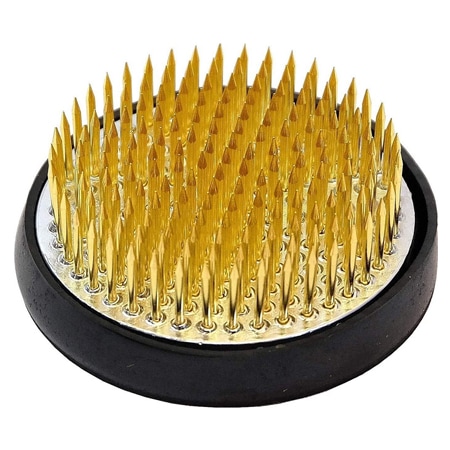
A pin frog or Kenzan is a circular object made from vertical pins that hold the flowers. There are lots of different sizes available to suit the scale of arrangement you want to make.
Flowers And Branches
Natural flowers and branches are pivotal in Ikebana, and you can find plenty of inspiration in your garden and surrounding countryside. However, before you start snipping blooms and foliage, always double-check the laws in your area to ensure you’re allowed to forage!
Container
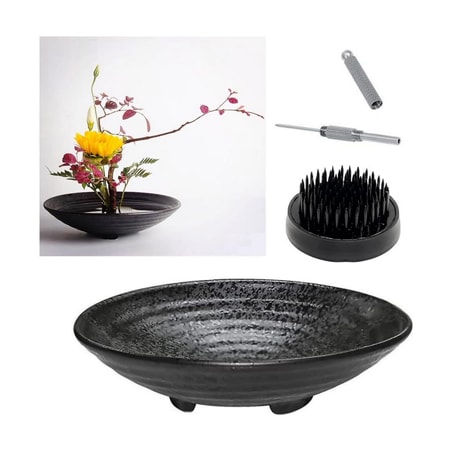
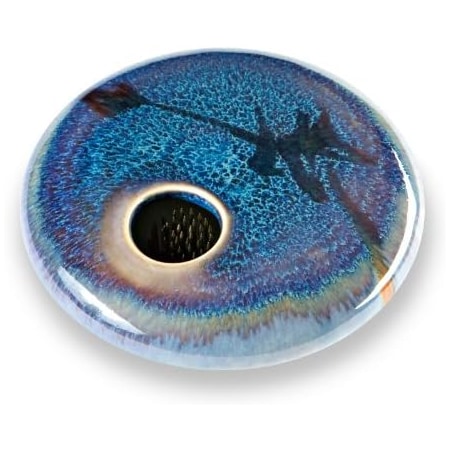
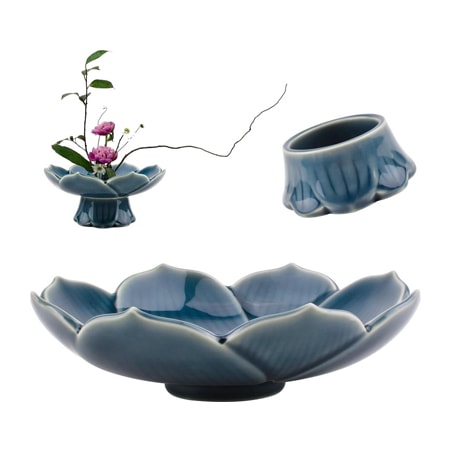
Ikebana uses very simple containers to ensure that the items used in the display are the main feature, so the vase you use shouldn’t distract from your display.
Scissors Or Pruners
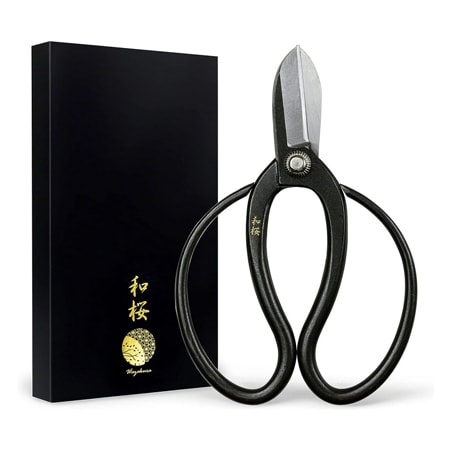
As with any flower craft, you’ll need a high-quality pair of sharp scissors or pruners for trimming the stems and branches you plan to use in your display.
Rice Paper Or Leaves
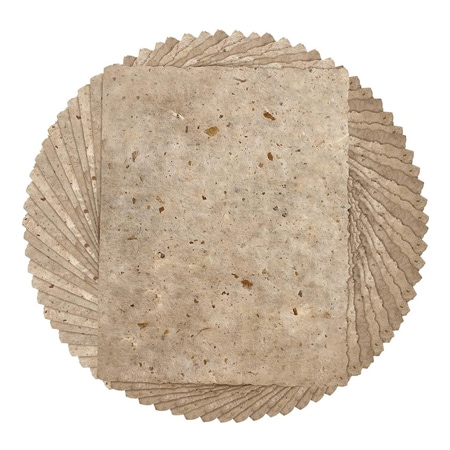
In Ikebana, rice paper and leaves can be used to wrap and tie flowers and branches together or to create a backdrop or base for the display. You can create origami-style designs from rice paper, while the leaves can create a natural-looking, textured background.
Kenzan Rubber Grips
Kenzan rubber grips are a form of a rubberized coating that you apply to the base of a floral frog to help stop it from slipping or scratching the container you’re using. The rubber grips provide a sturdy and non-slip base for the frog, making it easier to arrange your flowers and branches in the display securely.
The kenzan is generally supplied with a rubber grip fitted to it.
How Do You Make A Flower Craft?
Making your own flower craft takes time, effort, and patience, but it’s well worth the trouble when you admire the beautiful result!
How To Make A Flower Bouquet
To create a beautiful flower bouquet, follow these simple steps!
Gather Your Materials
Start by choosing the materials you want to use in your bouquet. That includes flowers and greenery, but you might also want to include embellishments like ribbons, beads, and the like.
Select Your Flowers
Now, decide what flowers you want to use. You can choose flowers from your garden, wild species, or fancy exotic varieties you’ll get from a good florist. Don’t forget; you can use silk flowers if the ones you want aren’t in season or are too expensive for your budget.
Prepare The Stems
Cut the stems to the length you want using a clean, angled cut. Don’t leave ragged edges that will decay and encourage bacteria. Now, put the stems in a bucket of clean water and leave them in a cool place for a few hours to give them a good drink.
Create The Structure
In this step, create the basic structure of the bouquet by arranging the flowers to create the look you want.
Add Foliage
Next, choose the foliage and greenery you want and fit it into the bouquet, remembering to keep the display in proportion and taking care not to obscure your blooms with leaves.
Secure The Bouquet
Use floral tape to secure the bouquet, and create a clean handle if the arrangement is to be carried. You don’t need to worry about decorating the handle since it won’t be seen.
Trim And Arrange
Finish your bouquet by trimming away any excess leaves and stem length to complete your bouquet.
Keep the bouquet somewhere cool and dry until it’s needed to keep the flowers fresh.
How To Create A Floral Design
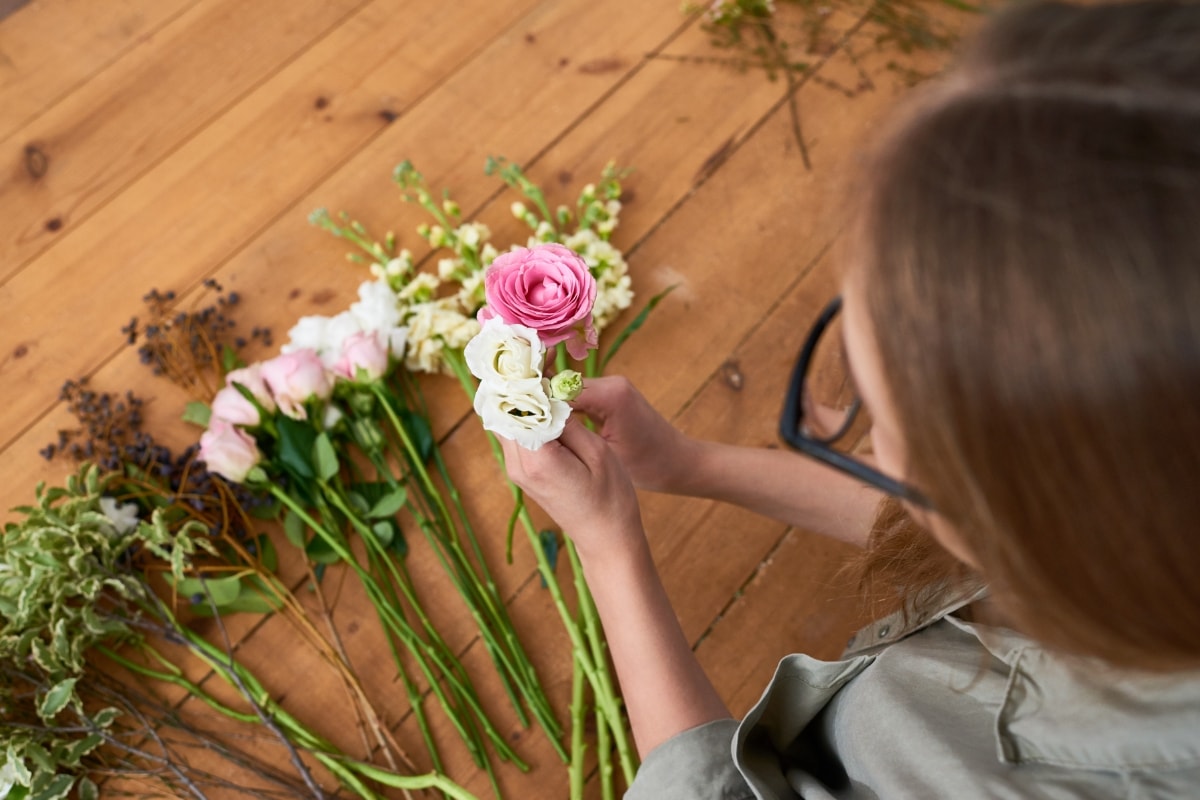
Here’s how to create a floral design. Of course, the shape, style, and color of your arrangement are essentially down to you, but the method remains the same.
Gather Your Materials
Start by getting together everything you’ll need. If you have what you need on hand, that saves you from having to stop what you’re doing to go and get things, making the process much quicker.
Prepare The Container
Prepare the container you’re going to use for your arrangements by giving it a quick rinse to get rid of dust. If you intend to use pieces of florist sponge to hold your stems in place, trim the sponge to the correct size, soak it in water, and add it to the container.
Plan Your Design
Have a clear idea in your mind of the design you want to achieve, and make notes and sketches on paper to help you remember.
Trim And Insert Stems
Trim the stems of your flowers to an appropriate length and insert them into the container. Don’t worry too much about the look of the arrangement at this point; you can make any necessary adjustments later.
Add Greenery
Next, add whatever greenery and foliage you’ve decided to use, being careful not to obscure your flowers or unbalance the display.
Incorporate Accessories
If you are using any accessories like hearts, butterflies, etc., now is the time to add them. Again, make sure the accessories and hence the display rather than taking the viewer’s attention away from the flowers.
Final Touches
Now, make any final touches to your arrangement. Sometimes, flowers and leaves can move when you add accessories, so you might need to make a few minor adjustments to get the look you want.
How To Create An Ikebana Arrangement
Ikebana is the traditional art of Japanese flower arrangement, producing designs with a classic, minimalist look.
Here’s how to do it!
Gather Your Materials
Start by gathering everything you will need to create your display so that you don’t need to break off midway through to go and get something.
Prepare The Container
Prepare the container by rinsing it to get rid of any dust, and insert the kenzan with its rubber backing to prevent it from slipping.
Plan Your Design
Before you start, have a clear idea in your mind about the design you want to achieve. Making notes on paper and sketching how you want the finished arrangement to look can be helpful.
Trim Stems
Trim all the stems you will use to an appropriate length and eliminate any crushed or broken ends.
Arrange Stems In Kenzan
Carefully arrange the stems in your kenzan, looking at them from different angles to be sure you’re creating the effect you want.
Wrap Stems (Optional)
If you want to, wrap the stems in rice paper or leaves to create a rustic effect.
Protect Surfaces (Optional)
It’s a good idea to protect the surface on which your flower arrangement is to stand, especially if the surface is wooden and could be damaged by drops of water.
Adjust And Balance
Finally, adjust and balance your display so that it is proportionate, visually attractive, and won’t overbalance.
What Are Some Examples Of Flower Crafts?
Here are some examples of flower crafts! As you’ve learned, there are three main kinds of flower crafts that are popular in the hobby, but there are other examples you might fancy trying, and we’ve included them in this overview.
Bouquet
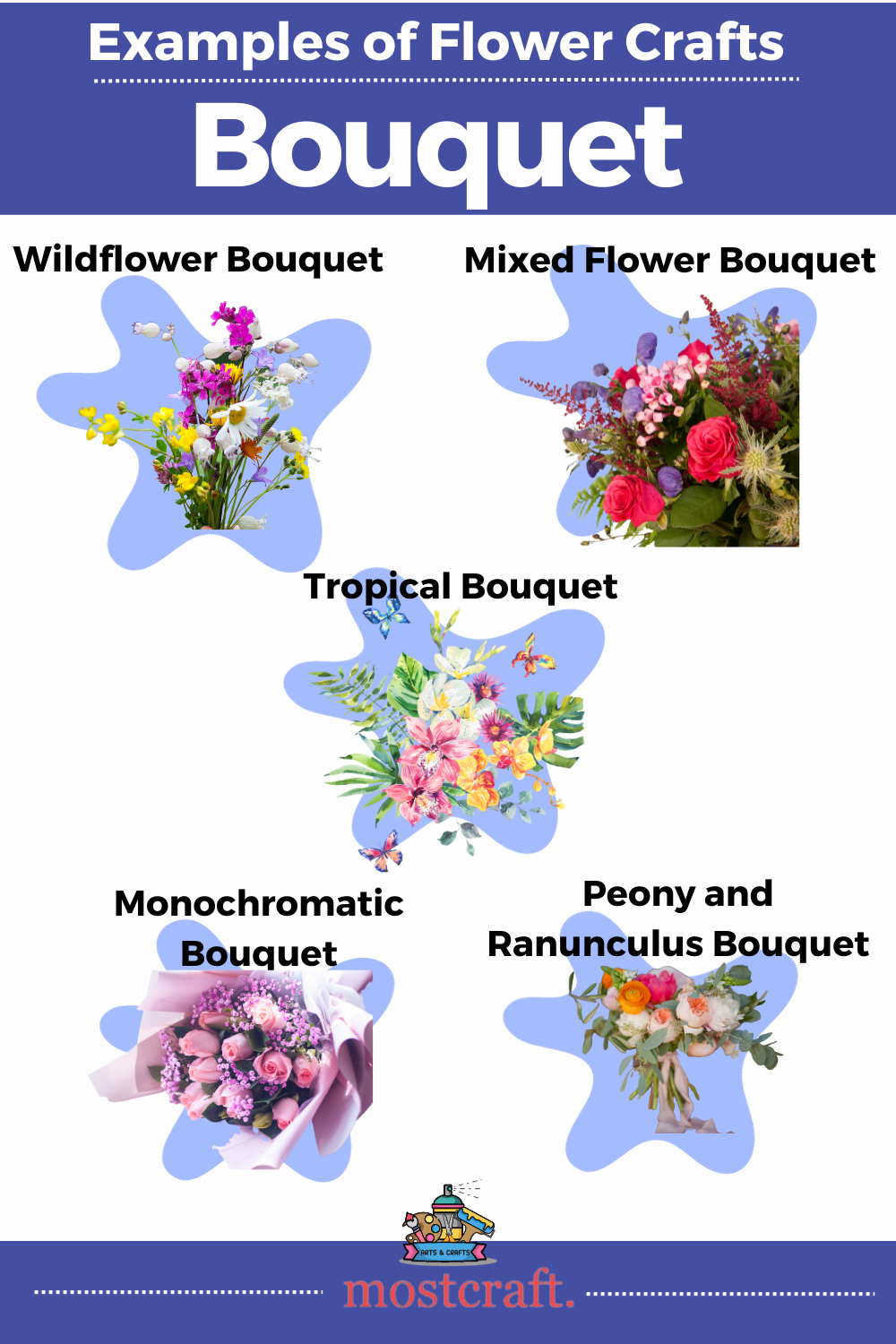
A creative arrangement of flowers is what makes up a flower bouquet. You can use a bouquet to complement your home decor or give it as a gift. However, bouquets are most often associated with weddings.
Here are examples of some different types of bouquets you could create.
Mixed Flower Bouquet
As it sounds, a mixed flower bouquet contains lots of different flower species and is often multicolored.
Wildflower Bouquet
A wildflower bouquet contains predominantly wildflowers.
Monochromatic Bouquet
Monochromatic bouquets use a combination of similar colors to give the appearance of just one. For example, you could use white, pearl, and cream flowers to create the illusion of a stunning all-white bouquet.
Tropical Bouquet
Tropical bouquets feature flowers and leaves that commonly grow in warm, equatorial locations.
Peony And Ranunculus Bouquet
Peony and ranunculus bouquets are the current craze with spring brides! Ranunculus is very similar to peonies, although their bloom size is slightly smaller and flatter. This style of bouquet uses both species of flowers to create a feminine, traditional effect, generally in shades of pink and white.
Floral Design
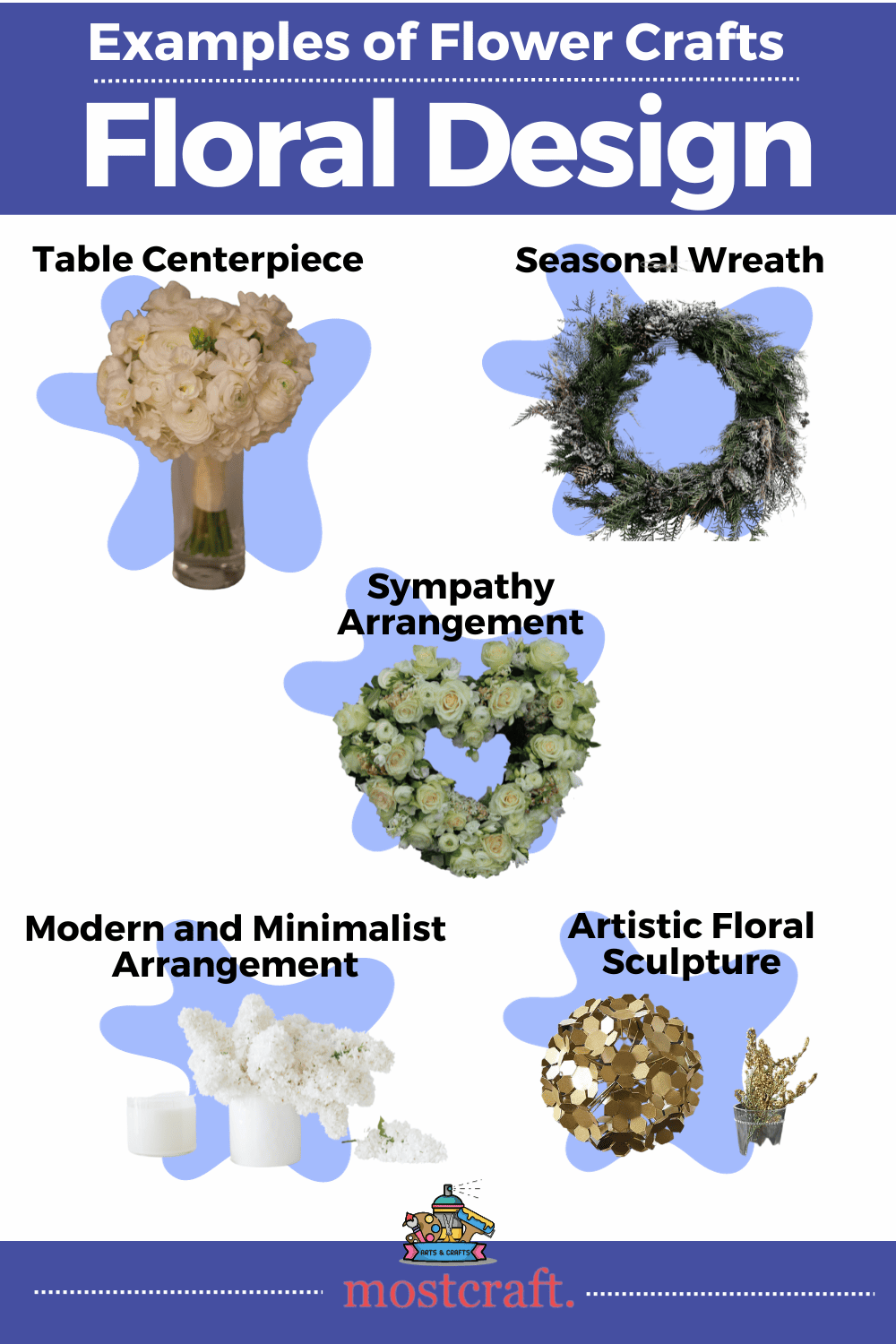
Floral designs can take any form you want to suit your home decoration, seasonal ideas, or celebrations.
Here are some popular ideas for floral design projects you might want to try.
Table Centerpiece
A beautiful table centerpiece can make a wonderful focal point for family celebration meals and special events. These designs are usually showstoppers, containing many different elements and should command the attention of everyone there.
Seasonal Wreath
Seasonal wreaths can look fabulous on your front door and can be used to reflect Christmas, fall, springtime, and summer.
Sympathy Arrangement
If someone you know loses someone dear to them, you could create a sympathy arrangement as a gift. White lilies are traditionally used for this kind of arrangement, but you can use any favorite flowers of the recipient.
Modern And Minimalist Arrangement
Depending on your home decoration theme, you could keep your designs modern and minimalistic, perhaps using a single bloom as the main feature.
Artistic Floral Sculpture
Floral crafts can be sculptural in nature, depending on the type of plants you use. Try incorporating pieces of wood, twigs, and other natural elements like stones and coral to create an architectural project adorned with flowers.
Ikebana
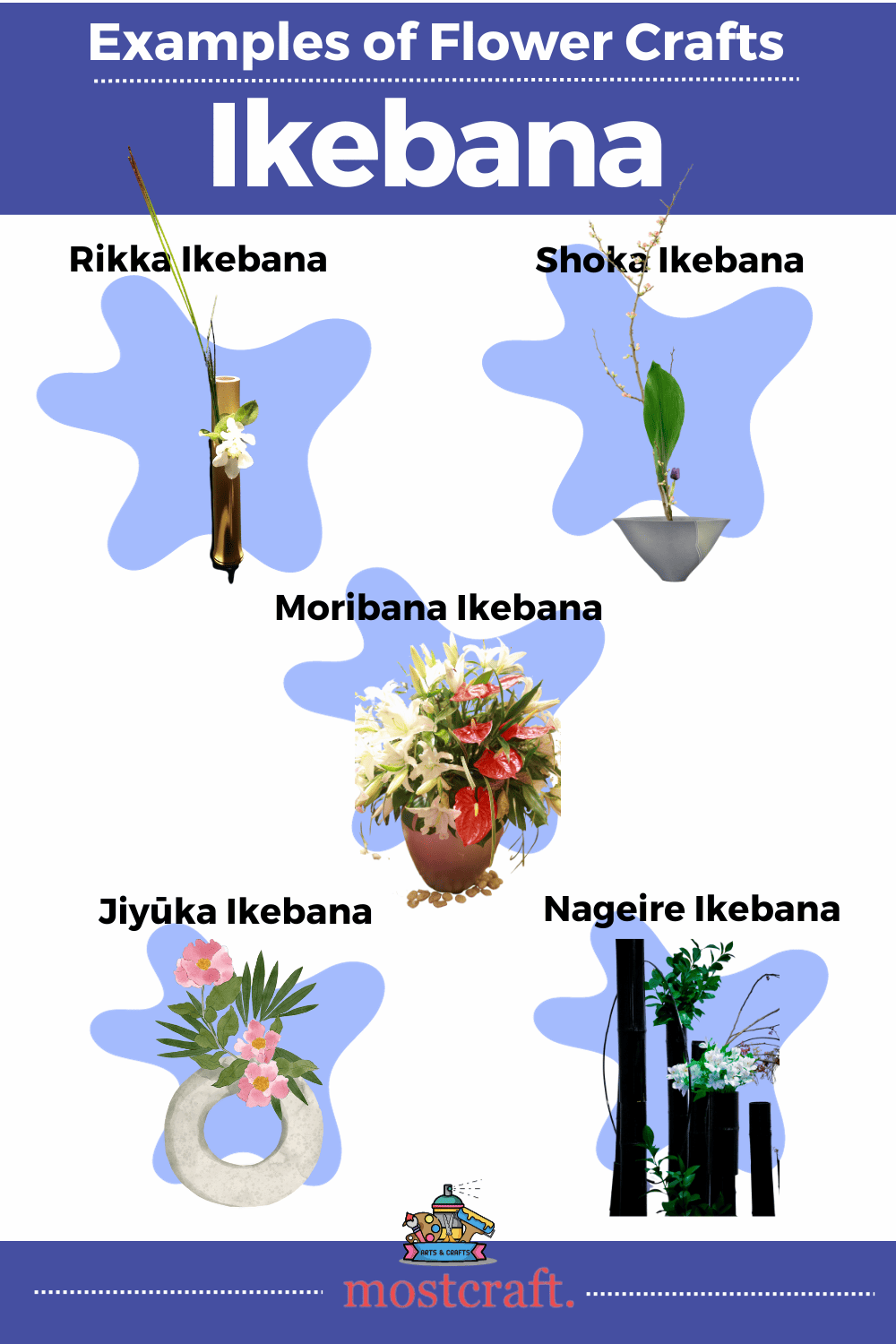
As we previously explained earlier in this guide, Ikebana is the Japanese art of flower arranging, using specialist tools and materials.
Rikka Ikebana
Rikka Ikebana was established during the Muromachi Period and is the oldest variation of this flower-arranging style. In Rikka, You use branches and plants to suggest the beauty of an entire natural landscape.
Shoka Ikebana
The Shoka style appeared in the late Edo Period and was formed by using one to three types of floral materials to express the living form of plants growing upward, rooted in the soil.
Moribana Ikebana
In this style of Ikebana, a shallow container and a kenzan is used. The main feature of Moribana arrangements is the wide range of natural-looking shapes and a hill of beautiful blooms.
Jiyūka Ikebana
Creativity is encouraged in the Jiyūka “free flowers” style, and you can use any materials, including non-flowers, in a freestyle design.
Nageire Ikebana
Nageire is a very popular Ikebana style that uses a tall, upright vase or container. This form of Ikebana doesn’t use a kenzan to support the arrangement.
Flower Craft FAQs
In this part of our guide, we answer some of the most commonly asked questions about flower crafts.
How Do I Keep My Bouquet Fresh For Longer?
Constructing a beautiful bouquet of fresh flowers takes time and effort, so you want your flowers to last as long as possible. Here are some top tips for keeping your bouquet fresh for longer.
- Cut the stems at an angle before you put your flowers in water. That increases the stem’s surface area, enabling greater water absorption.
- Remove the lower leaves from the stems to keep them off the water. That stops bacteria from growing on the stems and blocking the xylem vessels inside, preventing the stem from absorbing water and nutrients.
- Use clean, fresh, lukewarm water to fill your vase.
- Add a small splash of household bleach or vodka to the water to prevent bacterial growth.
- A pinch of sugar can help provide the flowers with nutrients, acting as an energy source and preventing them from wilting. If you don’t have any sugar, clear lemon-lime “full-fat” soda works just as well.
- To keep the flowers fresh, change the water every few days or if it gets cloudy, so bacteria won’t grow.
What Is The Difference Between A Hand-Tied Bouquet And A Cascading Bouquet?
The first thing to note is that a cascading bouquet can also be hand-tied.
A hand-tied bouquet is created by arranging the individual flower stems in your hand to form the arrangement. Once the design is complete, you can cut the stems to fit in a vase or form a handle to wrap in ribbon to create a hand-tied bouquet.
A cascading bouquet has the flowers angled downward, forming a teardrop of waterfall shape. These bouquets often use long-line flowers with blooms right along the stem to create that look and feel. Usually, cascade bouquets are held by short handles behind the flowers, with the blooms facing outward, away from the holder.
Can I Make A Bouquet With Artificial Flowers?
Yes, you can create a beautiful bouquet using artificial flowers.
Silk and artificial flowers can look just as beautiful as fresh ones, and you can keep them as a permanent memento of your special day! I created my wedding bouquet from silk flowers, and it looked gorgeous! I didn’t have to worry that the flowers would get damaged in transit or that they would wilt if the weather turned warm. You don’t need to worry about what flowers are “in season” or available from the florist since you can choose any color, species, or size of bloom you like!
What Are Some Popular Bouquet Styles For Weddings?
There are lots of bouquet styles that are perfect for weddings, including cascading arrangements, posies, round bouquets, and hand-tied bouquets that are great for rustic, less formal ceremonies.
What Are Some Tips For Creating A Balanced Floral Design?
Flower selection, placement, and color are all essential when creating a balanced, proportionate floral design.
- An equal element on the opposite side should offset each side of the design. So, your arrangement should have equal eye attraction or visual weight on each side.
- Use flowers, containers, and foliage in an appropriate, proportionate scale.
- Keep the size of the flowers in balance and proportion. For example, using very large flowers like lilies with tiny flowers, such as cornflowers, looks out of balance and proportion.
- When picking vases and flowers together, carefully consider proportion and scale. The arrangements will fail if the flowers are too heavy and tall for the vase, and it won’t look right if you cram too many flowers into a small vase or not enough into a large one.
- Greenery and foliage should be in proportion with the blooms to accent their shapes and sizes.
Are There Any Design Principles I Should Follow For Floral Arrangements?
Yes, according to the Texas State Florists’ Association, the primary principles of design are:
- Proportion
- Balance
- Dominance
- Rhythm
- Contrast
- Unity
The secondary principles of design are:
- Scale
- Focal point
- Repetition
- Accent
- Depth
- Transition
- Variation
- Opposition
- Tension
Can I Use Any Type Of Flowers In Ikebana?
Yes, you can use any type of flowers in Ikebana.
However, within that, many stems have deep symbolic and cultural meanings. Some of the most popular and commonly used flowers in Ikebana are Chrysanthemums, which are said to be symbolic of natural perfection and the sun. Iris, Camellia, and Peony are also very popular in this flower craft.
Is Ikebana Only Practiced In Japan?
No, although it’s true to say that Ikebana is widely practiced by many young women in Japan, this form of flower arrangement and crafting is popular worldwide.
Conclusion
Flower crafts are an extremely popular craft that encourages creativity, promotes improved dexterity, and can give you a tremendous sense of achievement when you admire your finished design.
You’ll need a few basic tools and materials for flower arranging, and you can work with fresh flowers and natural greenery or opt for synthetic silk flowers instead. Using silk flowers means you can use any color and species, no matter what time of the year you want your arrangement for.
Whether you want to create formal wedding bouquets, party arrangements for Halloween or Christmas, birthday party table centers, or try the ancient Japanese art of Ikebana, flower crafting offers something for everyone.
Get started today, and remember to share your designs with us!
